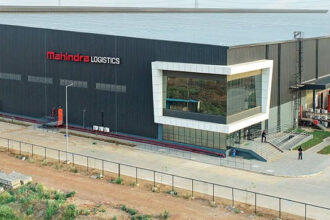What is a Warehouse Inventory Management System?
A Warehouse Inventory Management System (WIMS) is a software solution designed to streamline and optimize the warehouse inventory tracking system and related processes within your warehouse. It automates and centralizes various tasks, from receiving and storing goods to tracking inventory levels, fulfilling orders, and managing returns.
In today’s competitive business landscape, efficient warehousing and inventory management are no longer just optional, they’re essential. Investing in advanced warehouse and inventory management software can be the key to unlocking significant logistical improvements and gaining a crucial edge.
Warehouse inventory tracking software solutions offer a comprehensive suite of features designed to transform your warehouse stock management. Real-time visibility into inventory levels, automated order fulfillment workflows, and minimized errors are just the tip of the iceberg. By leveraging the power of warehouse and inventory management software.
What is the Inventory Management System?
Inventory management is the process of efficiently tracking and managing a company’s inventory levels. While traditional methods of inventory management, such as manual tracking, can be effective, they are often time-consuming and prone to human error.
This is where technology comes in, revolutionizing inventory management and making it easier and more efficient than ever before.
In modern inventory control warehouses, technology plays a vital role in improving accuracy, reducing costs, and increasing profitability. Here are some of the ways technology has changed the face of inventory management in warehouse:
Automated inventory tracking systems One of the most significant advantages of technology in warehouse inventory management systems is the automation of warehouse inventory tracking. With the help of automated systems, companies can track inventory levels, monitor stock movements, and receive real-time updates about their inventory status. This saves time and eliminates the need for manual inventory tracking, which is prone to errors.
RFID Technology Radio Frequency Identification (RFID) technology is another innovation that has revolutionized inventory management. RFID tags are attached to inventory items, which allows them to be tracked and monitored as they move throughout the supply chain. RFID technology enables companies to monitor inventory levels in real time, reduce the risk of stockouts, and increase supply chain visibility by using warehouse inventory management software.
Cloud-based inventory management systems Cloud-based inventory management systems in warehouses have made it easier than ever for businesses to manage their inventory levels. These systems enable companies to access inventory data from anywhere, at any time and make informed decisions based on real-time information. Additionally, cloud-based systems allow for seamless collaboration between teams and can be easily integrated with other business applications.
Forecasting and Analytics Another significant advantage of technology in warehouse inventory tracking is the ability to use forecasting and analytics to predict demand and optimize inventory levels. By analyzing historical data and using advanced algorithms, companies can forecast demand and make informed decisions about inventory levels. This not only saves time and reduces costs but also ensures that the company always has the right inventory levels to meet customer demand.
Challenges In Implementing Technology in Warehouse Inventory Management
Technology has revolutionized warehouse inventory management system, offering many advantages like enhanced efficiency, improved accuracy, and reduced costs. However, integrating these innovative solutions comes with its own set of challenges that businesses need to address effectively.
Initial cost associated with implementation
Investing in warehouse inventory software, hardware, training, and ongoing maintenance can be substantial, especially for smaller businesses. This necessitates careful planning, budgeting, and exploring cost-effective solutions like cloud-based platforms or subscription models.
Adopting new technology
It requires a significant shift in existing processes and workflows. Employees may face a learning curve, and resistance to change can hinder the smooth integration of the technology. Implementing comprehensive training programs, addressing concerns transparently, and encouraging feedback are crucial to overcoming user adoption challenges.
Data accuracy and consistency
These are crucial for effective warehouse inventory management. Mismatched or inaccurate data can lead to errors in stock levels, order fulfillment, and other critical processes. Businesses need to invest in data quality initiatives, establish clear data governance policies, and implement robust data validation procedures to ensure data integrity.
Interoperability issues
This can arise when integrating different technologies within the warehouse. Ensuring seamless communication and compatibility among various systems, such as inventory management software, barcode scanners, and other devices, is essential for achieving optimal efficiency. Open-source platforms, standardized data formats, and API integrations can help overcome these challenges.
Why To Choose Pyrops Warehouse Inventory Management Software
Choosing the right Warehouse Inventory Management Software is crucial for your business success. With Pyrops, you get more than just warehouse inventory software – you get a partner dedicated to transforming your warehouse operations. Gain real-time visibility into your inventory, optimize order fulfillment, and enhance overall efficiency. From automated workflows to comprehensive reporting, we redefine the way you manage inventory.
Conclusion
In conclusion, technology has played a significant role in modern warehouse inventory management software, making it more efficient, accurate, and profitable. Automated warehouse inventory tracking systems, RFID technology, cloud-based inventory management systems, and forecasting and analytics are just a few examples of how technology has transformed the way businesses manage their inventory levels.
Companies that leverage technology to improve their inventory management processes can gain a significant competitive advantage and drive business success.






